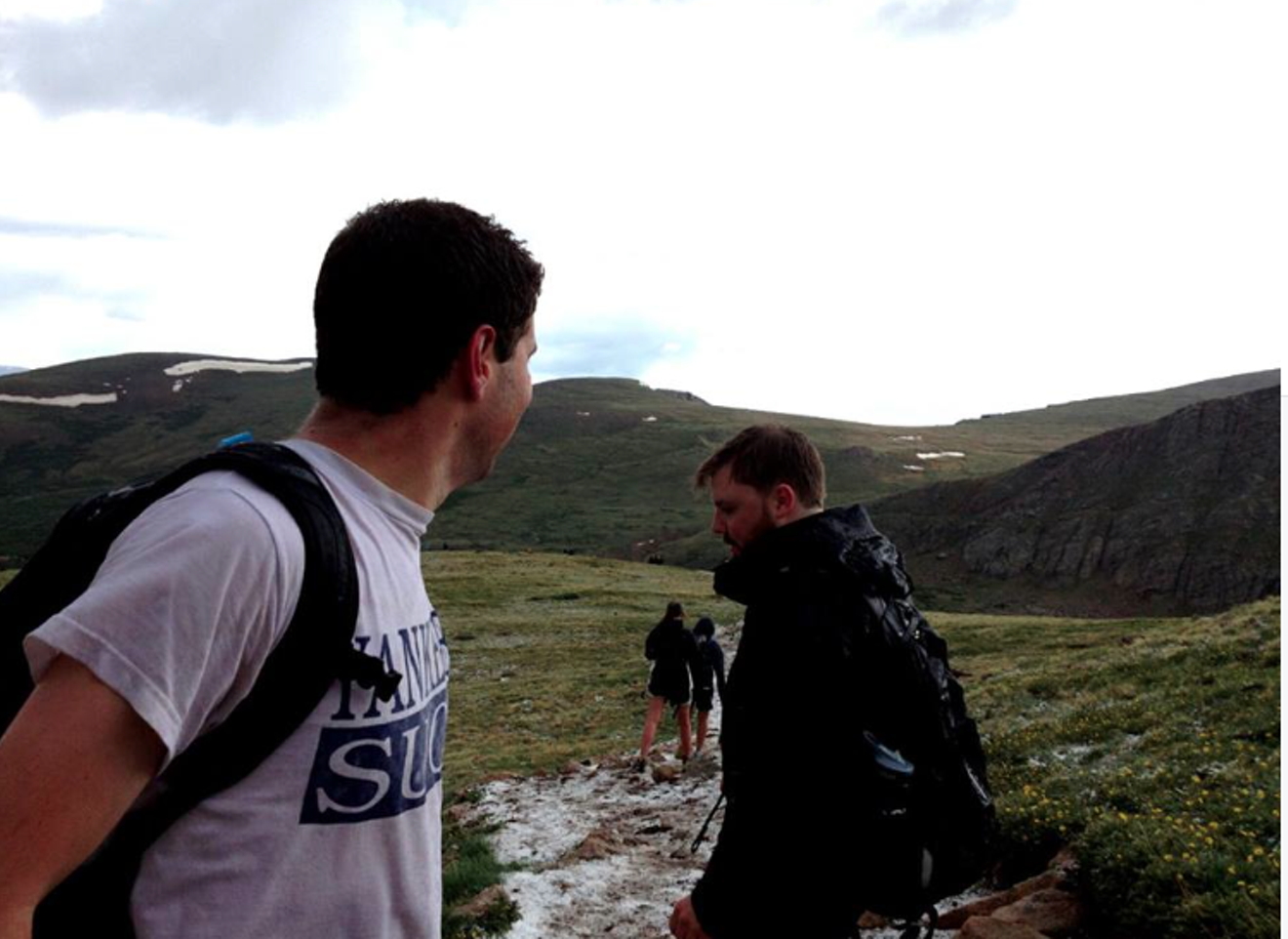We were so, so close.
In June 2013, a group of friends and I trudged up Mount Bierstadt. For two in the group, reaching the summit would have marked their first Fourteener.
Mother Nature, however, had other ideas.
A few hundred feet from Bierstadt's summit, the skies off in the distance started to rumble and darken. We all turned to each other, seeking mutual assurance that we could keep climbing despite Mother Nature appearing ready to unleash a temper tantrum on our treeless haven of sky-high earth.
Flash! A bolt of lightning appeared, but it was off in the distance by what seemed a fairly considerable margin. I'd calculated earlier that we had a good hour before the first storms were supposed to fire up. Onward and upward.
But seconds later, right above us, the skies unleashed a terrifying torrent of non-stop lightning, golf ball-sized hail and driving rain.
A mass of panicked hikers began sprinting down Bierstadt's rocky spine, apparently hoping to make it to the relative shelter of tree line, about 2,000 feet below. Fear of the storm and the stinging pain of the hail had some hikers crying and others were screaming, but most were quietly sprinting off their adrenaline in search of safety.
This was the point where, as a meteorologist and a presumed authority on the subject, I finally found my voice.
"Get down!"
We found a small crevasse, nestled in, and waited out the rest of the storm before finally hiking back to our cars, relieved. Everyone else was okay on the mountain that day, and so were we.
More than four years later, this incident is still with me. Instinct — your hard-to-shake feelings during moments of crisis — tells you that doing something is the way to go. Shouldn't you just run for it rather than crouch helplessly at 13,500 feet while getting drilled by hail?
No.
The science behind lightning makes Colorado a place where outdoor enthusiasts, particularly the many thousands of us who venture beyond tree line, are at their most vulnerable.
Sparing you some of the gorier, nerdier details, here's why: Lightning is essentially a series of charges balancing themselves out through the rapid rise and fall of air currents, along with water and ice. The resulting friction from all that fast movement creates a strong negative charge at the base of a cloud. All of us earthlings, the ground beneath us and everything else on it are all positive charges, and cloud-to-ground lightning tries to find the most efficient path towards earth. That's why trees and high-rise buildings and anything with elevation are frequently struck. But that same logic holds for people in open, exposed areas, where we become the highest point.
More Americans (and Coloradans) were killed in 2016 by lightning than by tornadoes and hurricanes. Combined.
According to the National Weather Service, Colorado has the fourth-highest lightning death rate in the country on a per capita basis, based on figures from 1959 through 2016. The top two states on the list, Wyoming and New Mexico, border Colorado. A total of 146 people died in Colorado from lightning strikes during that 57-year span.
This isn't to suggest you should stay inside all summer, squatted beneath a table while wearing a helmet. Colorado may be near the top of the list for lightning deaths, but fewer than one person in a million is killed by lightning each year in this state (0.81, to be exact). Still, by nature, lightning deaths are almost always preventable. If you're inside a building or even inside a car, your odds of being injured by lightning are virtually nil.
If you're outside and you can hear thunder, you're close enough to be struck. Lightning can strike up to fifteen miles away from the heart of a storm, so if you're anywhere outside, it's time to head indoors.
There are ways to fool Mother Nature and still enjoy the great outdoors. If there's a chance for storms, make sure you get that hike in early; try to have it wrapped up by 11 a.m. And if you encounter a surprise storm, as I did those few years back, remember: Wait, don't run.
Chris Bianchi is an on-air broadcast meteorologist for national network WeatherNation TV, based in Centennial.
[
{
"name": "Air - MediumRectangle - Inline Content - Mobile Display Size",
"component": "12017618",
"insertPoint": "2",
"requiredCountToDisplay": "2"
},{
"name": "Editor Picks",
"component": "17242653",
"insertPoint": "4",
"requiredCountToDisplay": "1"
},{
"name": "Inline Links",
"component": "18838239",
"insertPoint": "8th",
"startingPoint": 8,
"requiredCountToDisplay": "7",
"maxInsertions": 25
},{
"name": "Air - MediumRectangle - Combo - Inline Content",
"component": "17261320",
"insertPoint": "8th",
"startingPoint": 8,
"requiredCountToDisplay": "7",
"maxInsertions": 25
},{
"name": "Inline Links",
"component": "18838239",
"insertPoint": "8th",
"startingPoint": 12,
"requiredCountToDisplay": "11",
"maxInsertions": 25
},{
"name": "Air - Leaderboard Tower - Combo - Inline Content",
"component": "17261321",
"insertPoint": "8th",
"startingPoint": 12,
"requiredCountToDisplay": "11",
"maxInsertions": 25
}
]












